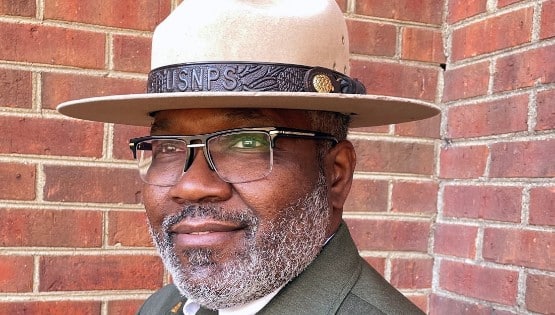
[email protected]
It’s not a new idea, not even in Waynesboro, not even from Vice Mayor Frank Lucente, who first broached the subject of spinning economic-development activities out from under the direct purview of Waynesboro City Council in 2005.
“They can do a lot of things that the city council can’t do, like make loans, sell bonds, own property, sell property, lease property. They can operate a lot like the housing authority. My vision is to have a stronger Industrial Development Authority. I feel that it’s a tool that we have not utilized to its full potential,” Lucente told The Augusta Free Press for a story published on Sept.2, 2005, that had Lucente setting as his top priority empowering the IDA to seek to bring industry and manufacturing to Waynesboro and a secondary goal of having the IDA “become financially independent of the council and the city, again like the housing authority,” Lucente said.
That ’05 effort fizzled, but it’s coming back in ’08 with a modified proposal from Lucente to move the Economic Development Authority out from under the thumb of the city that Lucente is selling first and foremost as a cost-saving measure. “The result of this would be to hopefully free up money that the city council is now putting out for economic development, which is a sizable amount. We could free this money up for other city services that we have needs for down the road. I understand we’d have to seed money to them in the beginning, but it would be my hope that they could become self-sufficient,” Lucente said at last week’s city-council meeting, during which he suggested somewhat dramatically that the city could save up to a million dollars a year in monies that Lucente said the city commits to EDA activities currently.
My review of economic development authorities and industrial development authorities in the Central Shenandoah Valley and Central Virginia doesn’t give me any initial feeling that we can ever expect to see the Waynesboro EDA at a point of self-sufficiency or anything close to it. The EDA in Nelson County is able to fund initiatives in the areas of broadband development, small-business development and the marketing of a county business park, but it still gets regular funding from the county, according to economic-development director Maureen Corum. The IDA in Staunton also has monies to commit to grant programs and marketing efforts in the Queen City, but as in Nelson, the Staunton IDA gets regular funding from the local government to make its ends meet. In fact, the entire $432,000 budget for the economic-development department in Staunton is funded directly by city taxpayers, according to economic-development director Bill Hamilton.
Mark Wagner, whose term as chairman of the Waynesboro EDA expires at the end of the month, told me that a key reason why the review of this idea from Lucente didn’t result in any action when it was first presented to city leaders back in 2005 was that questions regarding self-sufficiency couldn’t be answered to anyone’s final satisfaction. ”
“What we couldn’t come to grips with before is if you’re out on your own, you’ve got to have your own revenue stream. And that’s what we couldn’t get our hands around. Certainly you can get seed money from the city and get things going, but how do you keep that revenue stream going?” Wagner said.
Lucente has said that he thinks a good model to emulate with respect to how this would work in practice is the Redevelopment and Housing Authority, which he knows well as a past member of its board of directors. But Wagner points out that the RHA model doesn’t apply in an apples-for-apples comparison with the EDA because the RHA has a stable source of revenues in the apartments it leases and the homes that it builds and leases and sells, while “you really can’t make that continuous stream as an EDA.”
“Are there things you can do to make money? Yes, there are. There are ways to generate revenue. But can you do that as a continuous stream to fund the organization? Two years ago, we looked around the state to look at IDAs and EDAs to look for similar models where they separate the two and hire their own director. There are several models out there that do that, but the common thread to all those models is that they are funded by their local governments,” Wagner said.
Wagner said he would like to see a five-year business plan that would lay out exactly the steps that would be taken to take the EDA out from under the fiscal responsibility of the city. Bill Hamilton in Staunton suggests that it may take longer than that to see any real movement toward EDA self-sufficiency. “What you would have to do to be really successful at that would be to have a model that would incorporate several things,” Hamilton said. “When you do financings, like industrial revenue bonds, you do set fees, so you would collect those fees. You can certainly apply for grants, although there are fewer and fewer of those grants that come directly to economic-development groups like that. You could do like economic-development partnership groups do, which is to solicit private members, private businesses, and ask them to make an annual commitment of funding. Some communities create a foundation, and they find local investors, and those investors put money into that foundation.
“It would be tough to do that just from scratch,” Hamilton said. “You’d pretty much need to develop a plan to allow for some transition time. It would be pretty hard to do that from day one. You’d really need local government to do some of the funding until those various revenue sources began to create enough to be self-sufficient.”
“No matter where you end up, the funding will have to come from the city,” said Carl Rosberg, the executive vice president of the Waynesboro-based telecom Ntelos and a member of the Waynesboro EDA board of directors. “One concern I’ve had with the talk I’ve heard so far is people saying that if we use this new structure, we can save the city a million dollars. I’ve never talked to anyone that’s in in economic development where the entity is self-sufficient. So based on what I’m hearing and what I know today, if we say we’re doing this because it can be self-funding, I don’t think that we do this. If we decide it’s the best thing to do, it’s because you decide this structure can produce more value in the economic-development arena.
“But where I am now on this is, let’s get the facts and let the facts decide where we go with this,” Rosberg said.











